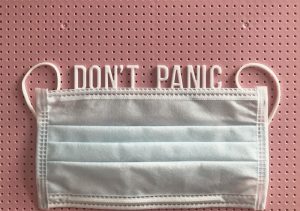
Organisations face more uncertain and complex times than they have before. We’re more aware of stress and how it affects our health. With new research, inspirational talks and insights, there’s always another new approach to creating the perfect work-life balance fueling the insecurity of a working nation. It’s easy to see why we’re an overwhelmed population… even the pressure to be well creates stress.
Generally, we do not live in a preventative way when it comes to our health. Live well until we get ill, then seek help. We mop up rather than prevent. When we’re ill, we hand over our health to experts (typically doctors and nurses) and trust they’ll make us well again. In some way our health therefore becomes somebody else’s responsibility. We see medical professionals as fixers rather than advisors.
We live in a time when it’s no longer enough to merely transact with your work, get paid and go home to your life. People generally want a greater sense of meaning, satisfaction and connection from their work. I’m often left wondering if in fact we now expect too much of our work when it comes to happiness and if we haven’t gone too far the other way (perhaps a blog for another time). That said these VUCA* times call for a different way of working if we’re to get the best from our people and act as organisations with a conscience.
In reflecting on this topic I’m reminded heavily about the tough lesson I learnt within my own burnout.
Pre-burnout I had very little real communication with my body, focussing only on my physical health (diet and exercise with some awareness of how sleep affected my ability to show up to work).
I certainly didn’t live in a preventative way when it came to managing my mental and emotional wellbeing, nor did I understand the impact it had on my physical health. The more stress I could handle, the more significant I became at work.
Through the tough lessons I learnt on my journey to recovery, I discovered that my health and happiness is my responsibility and something I needed to prioritise in a preventative, caring way. I needed to learn to manage my boundaries better, to ask for what I needed and to say ‘no’ more.
In our research at Oasis with members of the RAW network and beyond, we’ve uncovered a variety of approaches to tackling the challenge of happiness and health at work.
We’ve identified a spectrum that ranges from box ticking (how can we do enough to make sure we’re doing something) to fully integrated and proactively driven (start with the culture and filter out through everything we do). And of course there are a myriad of solutions in between.
Let’s be clear, there is very little evidence to suggest a right or wrong way. We are of course in the early days. Wellbeing at work is an emerging topic which may or may not stick around for the long haul. Knowing where to start can feel overwhelming in itself, making investment and resource decisions a conundrum for many.
It’s clear that a one-size-fits-all approach will never create the impact and results of a bespoke approach. After all, I’m yet to find two organisations that behave like identical twins. And yet having a basic framework to begin your conversations can be helpful, if only to discuss which bits work within your world.
As one of our RAW members, Heidi Garthwaite from Engage, recently said: ‘A reference point is essential and will help some to keep the core motivations in mind and avoid going off on a tangent or the actions being too abstract. Adding a bespoke layer on top of that inspirational base, designed by people within that particular company, seems like the right way to ensure that its application is relatable and goes beyond just lip service.’
Wherever you find yourself on the continuum of wellbeing within your work, here are some questions to ponder to get you thinking some more about what it might mean at a deeper level in your world:
- What’s your motivation, your vision?
Do you want to be reactive or proactive? What’s the ideal versus the realistic? Do you want something fully integrated or just enough? How does this work align and fit with your overall company vision and how will you bring it to life for your employees in a meaningful way amongst your other priorities?
- Where are your boundaries?
How is the way-your-organisation-works enhancing or depleting the working environment for your people? How does your culture, management and systems EMPOWER people to take responsibility for their own wellbeing at work? How much does your culture support trust between the business and its people? Do you have a healthy level of boundaries within your organisation and are they clearly understood?
- How will you know it’s working for you?
Do you need to measure the return on your investment? Is it possible to measure such a programme in a meaningful way given its humanistic nature? How can you engage in better dialogue with your people to understand both what’s required and its impact? How can you keep your measurement as human as possible?
- Keep it simple
Sometimes it’s best for our health and that of our organisations if we choose the simple path. What simple things do your people need from their place of work in order for them to feel more engaged, connected, and alive? Ask your people, listen well and follow that path the simple way.
So, to quote one of my favourite humans, David Whyte the poet, ‘The antidote to exhaustion is not more rest, it’s wholeheartedness.’ Whatever you decide to do next with your resilience and wellbeing activities, do it whole-heartedly.
*volatile, uncertain, complex and ambiguous











